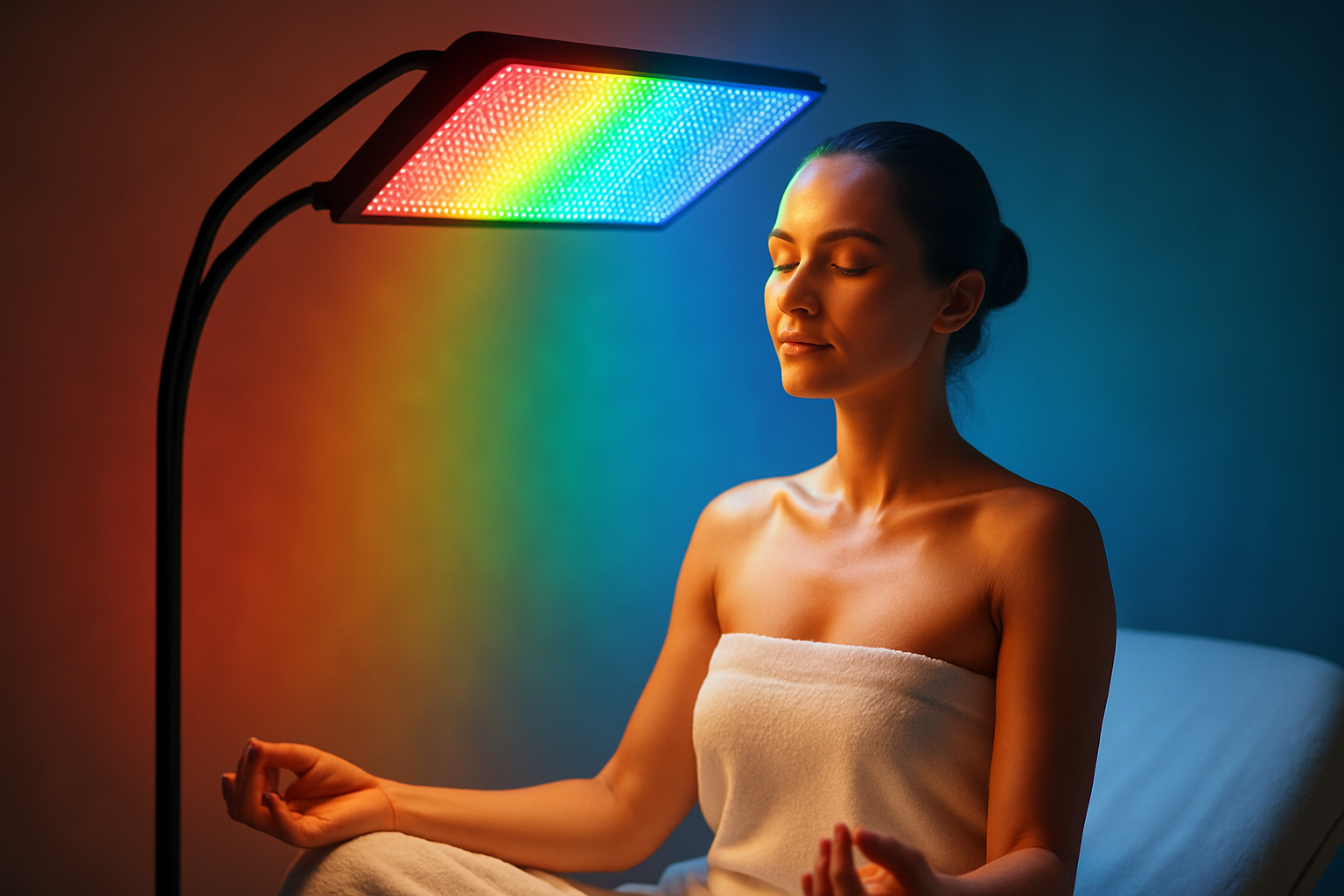Chromotherapy: The Spectrum of Wellness
Imagine a world where the simple act of bathing in colored light could alleviate stress, boost energy, and even aid in healing. This isn't a scene from a futuristic spa, but rather an ancient practice experiencing a modern revival. Chromotherapy, also known as color therapy, is emerging as a captivating frontier in the realms of beauty and wellness. As we delve into this vibrant world of healing hues, we'll explore how different colors are believed to influence our physical and emotional well-being, and why this once-fringe practice is gaining traction in spas, fitness centers, and home wellness routines across the globe.

The Science Behind Color’s Impact
While skeptics may dismiss chromotherapy as pseudoscience, recent studies have begun to shed light on the physiological effects of color exposure. Research has shown that different wavelengths of light can influence the production of hormones and neurotransmitters in the body. For instance, exposure to blue light has been found to suppress melatonin production, affecting sleep cycles, while red light has demonstrated potential in promoting cellular repair and reducing inflammation.
Chromotherapy in Modern Wellness Practices
Today, chromotherapy is finding its way into a variety of wellness applications. High-end spas are incorporating color-changing LED lights into treatment rooms, allowing therapists to tailor the ambiance to each client’s needs. Some innovative fitness studios are experimenting with chromotherapy-enhanced workout spaces, using specific color schemes to energize or relax participants depending on the type of exercise.
The Color Palette of Health
Each color in the chromotherapy spectrum is believed to have unique properties and effects on the body and mind. Here’s a brief overview of some key colors and their purported benefits:
-
Red: Associated with vitality and stimulation, red is thought to increase circulation and energy levels.
-
Blue: Often used for its calming properties, blue is believed to aid in relaxation and sleep.
-
Green: Linked to balance and harmony, green is used to promote emotional stability and stress relief.
-
Yellow: Considered uplifting and clarifying, yellow is thought to boost mood and cognitive function.
-
Purple: Associated with spiritual awareness and intuition, purple is used in meditative practices.
Integrating Chromotherapy into Daily Life
While professional chromotherapy treatments are becoming more widely available, there are also ways to incorporate color therapy into everyday routines. Some enthusiasts use colored light bulbs in their homes, switching colors based on their mood or needs. Others practice visualization techniques, imagining themselves bathed in specific colors during meditation or relaxation exercises.
The Future of Color in Wellness
As interest in holistic and alternative wellness practices continues to grow, chromotherapy is poised for further exploration and integration into mainstream health and beauty routines. Researchers are investigating its potential applications in treating seasonal affective disorder, sleep disorders, and even certain skin conditions. Some forward-thinking beauty brands are already developing color-based skincare lines, claiming that different hues can address specific skin concerns.
Challenges and Considerations
Despite its growing popularity, chromotherapy faces skepticism from the medical community. Critics argue that while color can certainly affect mood and perception, claims of physical healing are often overstated. As with any alternative therapy, it’s important for consumers to approach chromotherapy with a balanced perspective, consulting with healthcare professionals for serious health concerns.
Chromotherapy and Personal Care
The influence of chromotherapy is extending beyond spa treatments and into personal care products. Some innovative beauty tools now incorporate color therapy, such as facial rollers with built-in LED lights or color-changing face masks. These products claim to combine the benefits of traditional skincare with the mood-enhancing effects of specific light wavelengths.
The Psychology of Color in Fitness Spaces
Fitness centers are also tapping into the potential of chromotherapy. Some gyms are experimenting with color-changing lighting systems that shift throughout a workout session. For example, energizing red might be used during high-intensity intervals, while calming blue could signal cool-down periods. This integration of color psychology into exercise environments aims to enhance performance and overall workout experience.
In conclusion, chromotherapy represents a fascinating intersection of ancient wisdom and modern wellness trends. As we continue to seek holistic approaches to health and beauty, the power of color offers an intriguing avenue for exploration. Whether used as a complement to traditional treatments or as a standalone relaxation technique, chromotherapy invites us to view wellness through a more colorful lens. As research progresses and applications expand, we may find that the key to certain aspects of our well-being has been hiding in plain sight, spread across the vibrant spectrum of visible light.





